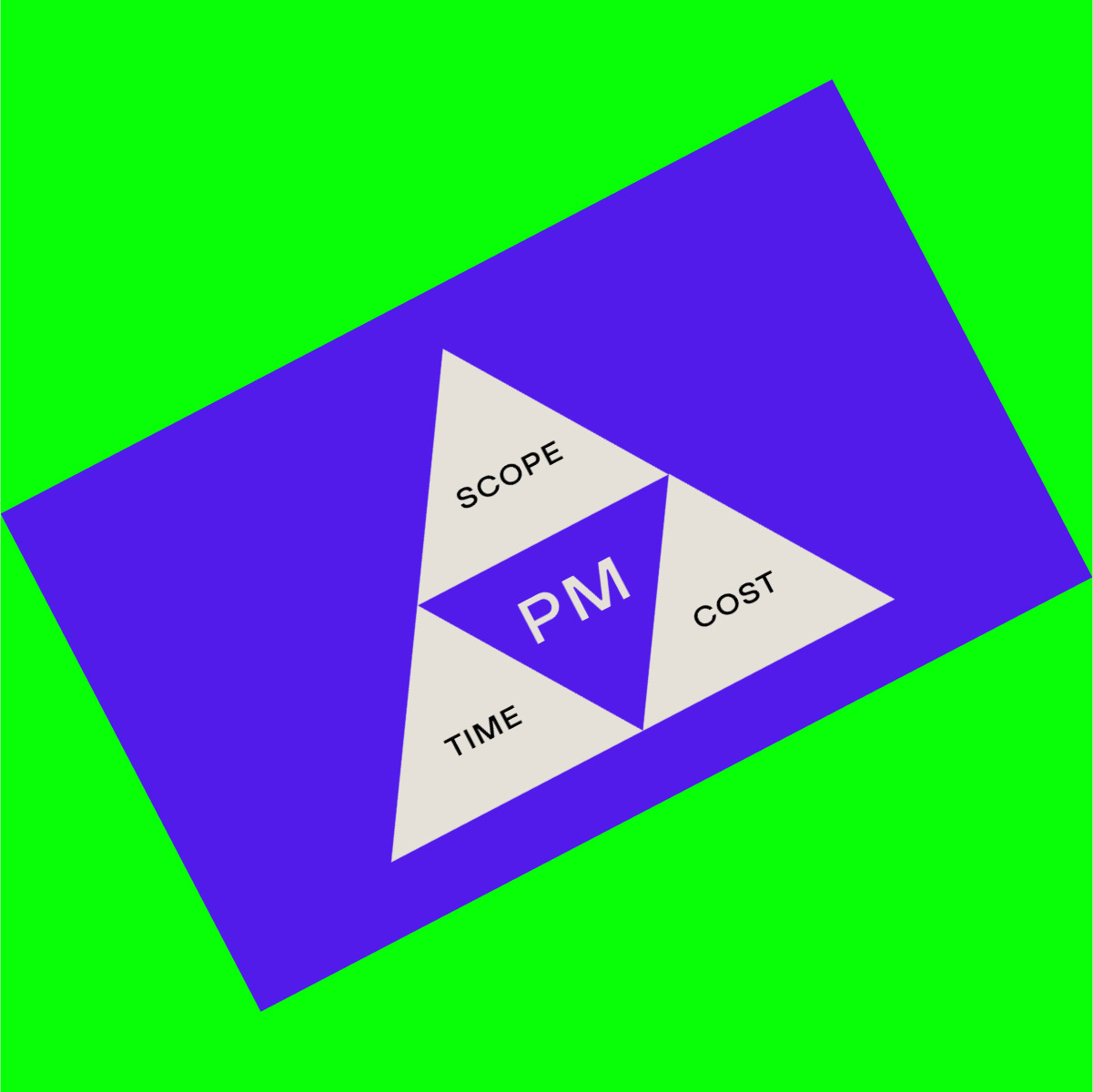Understanding the Iron Triangle of Project Management: The Key to Project Success

Understanding the Iron Triangle of Project Management: The Key to Project Success
Index
In the fast-paced world of project management, success often hinges on a delicate balance of time, cost, and scope.
This delicate balance is known as the Iron Triangle of Project Management, a fundamental concept that lies at the heart of every successful project.
Understanding the intricacies of the Iron Triangle is the key to unlocking project success and achieving desired outcomes.
Time represents the project’s deadline, the critical timeline that drives the entire process.
Cost represents the financial resources allocated to the project, ensuring that it remains within budget.
Scope represents the specific goals and deliverables that the project aims to achieve, defining its purpose and direction.
These three elements are interconnected, and any changes to one will inevitably impact the others.
By grasping the dynamic nature of the Iron Triangle, project managers can make informed decisions, manage expectations, and navigate potential challenges with agility and foresight.
In this article, we will delve deeper into the Iron Triangle of Project Management, exploring its components, and uncovering strategies for effectively managing this delicate balance to achieve project success.

The Three Components of the Iron Triangle: Time, Cost, and Scope
At the core of the Iron Triangle of Project Management lie three essential components: time, cost, and scope. Each of these elements plays a crucial role in determining the overall success of a project.
**Time** represents the project’s deadline, the critical timeline that drives the entire process. It includes the duration for completing individual tasks, as well as the overall project timeline. Time management is of utmost importance in project management, as delays can have a cascading effect, leading to missed deadlines and compromised outcomes.
**Cost** represents the financial resources allocated to the project, ensuring that it remains within budget. It encompasses various factors, such as labor costs, material costs, and overhead expenses. Effective cost management is essential to prevent budget overruns and ensure the project’s financial viability.
**Scope** represents the specific goals and deliverables that the project aims to achieve, defining its purpose and direction. It includes the project’s objectives, requirements, and expected outcomes. A well-defined and clearly communicated scope is critical to avoid scope creep, where the project expands beyond its original boundaries, leading to increased costs and time constraints.
These three elements are interconnected, and any changes to one will inevitably impact the others. For example, increasing the project’s scope may require more time and resources, resulting in an increased cost.
Similarly, reducing the project’s timeline may require additional resources or compromise the scope of the project.

The Relationship Between the Three Components
The relationship between time, cost, and scope is often referred to as a ‘trade-off matrix.’ As project managers, we must navigate this matrix to find the optimal balance for project success.
When one component of the Iron Triangle of Project Management changes, the other two components are also affected. For example, if the scope of a project increases, it may require more time and resources, resulting in increased costs.
On the other hand, if there are budget constraints, the project scope may need to be adjusted to fit within the allocated resources, potentially impacting the timeline.
Understanding this relationship is crucial for project managers to make informed decisions and manage stakeholder expectations. It requires a deep understanding of the project’s goals, constraints, and priorities, as well as effective communication with all project stakeholders.

The Importance of Balancing the Iron Triangle of Project Management
Balancing the Iron Triangle of Project Management is essential for project success. Failing to manage one component can have significant repercussions on the overall project outcome.
For example, if the project timeline is compromised, it may lead to rushed work, increased errors, and compromised quality.
Similarly, if the project exceeds its allocated budget, it may result in financial strains, resource shortages, and potential project termination.
By striking the right balance between time, cost, and scope, project managers can ensure that the project remains on track, within budget, and delivers the desired outcomes. This requires a proactive approach, anticipating potential challenges, and making timely adjustments to maintain the delicate equilibrium.

Common Challenges and Risks Associated With the Iron Triangle
Managing the Iron Triangle of Project Management comes with its own set of challenges and risks. Some of the common challenges include:
- **Changing requirements**: As projects progress, stakeholders may request changes or additions to the project scope. While it is important to be responsive to stakeholder needs, it is equally important to evaluate the impact of these changes on the project timeline and budget.
- **Resource constraints**: Limited resources, such as skilled personnel or financial constraints, can pose challenges in achieving the desired outcomes within the allocated time and budget. Effective resource management and allocation are crucial to overcome these challenges.
- **External factors**: Projects can be affected by external factors such as market conditions, regulatory changes, or unforeseen events. These factors can disrupt the project timeline, increase costs, and require adjustments to the project scope.
- **Poor communication**: Ineffective communication with stakeholders can lead to misunderstandings, unrealistic expectations, and conflicts. Clear and consistent communication is key to managing stakeholder expectations and maintaining alignment between time, cost, and scope.
To mitigate these challenges and risks, project managers must adopt a proactive approach, conduct thorough risk assessments, and implement strategies to address potential issues before they escalate.

Strategies for Effectively Managing the Iron Triangle
Successfully managing the Iron Triangle of Project Management requires a combination of strategic planning, effective communication, and proactive decision-making. Here are some strategies to help project managers navigate the delicate balance:
- **Define clear project objectives**: Clearly define the project objectives, scope, and deliverables from the outset. This ensures that all stakeholders have a shared understanding of the project’s purpose and direction.
- **Conduct thorough project planning**: Invest time in detailed project planning, considering the interdependencies between tasks, resource requirements, and potential risks. A well-thought-out plan provides a roadmap for effective project execution.
- **Prioritise tasks and milestones**: Prioritise tasks and milestones based on their importance and impact on the overall project outcome. This ensures that critical elements are addressed first, reducing the risk of delays and cost overruns.
- **Monitor and track progress**: Regularly monitor and track project progress against the defined timeline and budget. Implement project management tools and techniques to capture accurate data and identify potential bottlenecks.
- **Manage stakeholder expectations**: Maintain open and transparent communication with all project stakeholders, managing their expectations throughout the project lifecycle. Keep them informed about any changes to the Iron Triangle and the reasons behind those changes.
- **Implement change management processes**: Establish robust change management processes to evaluate and approve any changes to the project scope. This ensures that changes are carefully assessed for their impact on time, cost, and scope before implementation.

Real-Life Examples of Projects That Successfully Balanced the Iron Triangle
Numerous projects have successfully balanced the Iron Triangle of Project Management, achieving project success despite various challenges. Let’s explore two real-life examples:
- **The Sydney Opera House**: The construction of the Sydney Opera House faced significant challenges, including cost overruns and delays. However, the project team effectively managed the Iron Triangle of Project Management by revising the project scope, adjusting the timeline, and securing additional funding. The result was an architectural masterpiece delivered within a reasonable timeframe and budget.
- **SpaceX Falcon 9**: SpaceX’s Falcon 9 rocket project exemplifies successful management of the Iron Triangle. By leveraging innovative technologies, streamlining processes, and closely managing costs, SpaceX has consistently delivered on its promises while pushing the boundaries of space exploration.
These examples demonstrate that with effective management and strategic decision-making, even complex projects can achieve the delicate balance required for success.

Tools and Techniques for Measuring and Tracking the Iron Triangle
To effectively manage the Iron Triangle of Project Management, project managers can utilise various tools and techniques to measure and track progress. Some commonly used methods include:
- **Gantt charts**: Gantt charts provide a visual representation of project tasks, their dependencies, and the overall timeline. They help project managers track progress, identify bottlenecks, and make informed decisions.
- **Earned Value Management (EVM)**: EVM is a technique that integrates project scope, time, and cost to analyse project performance. It provides metrics such as Cost Performance Index (CPI) and Schedule Performance Index (SPI) to assess the project’s health and make necessary adjustments.
- **Key Performance Indicators (KPIs)**: KPIs are measurable parameters that track project performance against predefined objectives. They help project managers assess progress, identify areas of improvement, and take corrective actions.
- **Risk management tools**: Risk management tools, such as risk registers and risk matrices, help identify and prioritise potential risks. By proactively addressing risks, project managers can minimise their impact on the Iron Triangle.
The choice of tools and techniques depends on the project’s complexity, size, and specific requirements. Project managers should select the most appropriate tools to ensure accurate measurement and tracking of the Iron Triangle of Project Management components.

The Role of Stakeholders in the Iron Triangle
Stakeholders play a crucial role in shaping and managing the Iron Triangle of Project Management. Their involvement, expectations, and support heavily influence the project’s success. Project managers should actively engage stakeholders throughout the project lifecycle, ensuring that their needs are considered and managed effectively.
Stakeholders should be involved in defining the project’s objectives, scope, and success criteria. Their input helps align the Iron Triangle with organisational goals and ensures that project outcomes meet stakeholder expectations.
Regular communication with stakeholders is vital to manage their expectations and keep them informed about any changes to the Iron Triangle of Project Management. Project managers should proactively address any concerns, provide updates on progress, and seek feedback to maintain stakeholder trust and support.

Conclusion: The Significance of Understanding and Managing the Iron Triangle for Project Success
The Iron Triangle of Project Management is a fundamental concept in project management that represents the delicate balance between time, cost, and scope. Understanding the relationship between these components is crucial for project managers to make informed decisions, manage stakeholder expectations, and navigate potential challenges.
By effectively managing the Iron Triangle, project managers can achieve project success, delivering desired outcomes within the allocated time and budget. Balancing the Iron Triangle requires strategic planning, proactive decision-making, and clear communication with all project stakeholders.
With the right strategies, tools, and techniques, project managers can ensure that the Iron Triangle of Project Management remains in equilibrium throughout the project lifecycle, paving the way for successful project delivery and organisational growth.

Looking for Support?
Ready to launch your amazing product or service – or do you just want to grow your business – and need marketing, branding, and sales support to make it happen?
At Hunt and Hawk, we’re experts in these fields. Get in touch with us today:
- Email us at hello@huntandhawk.com.